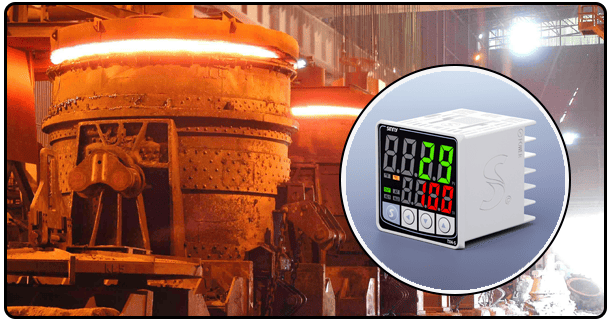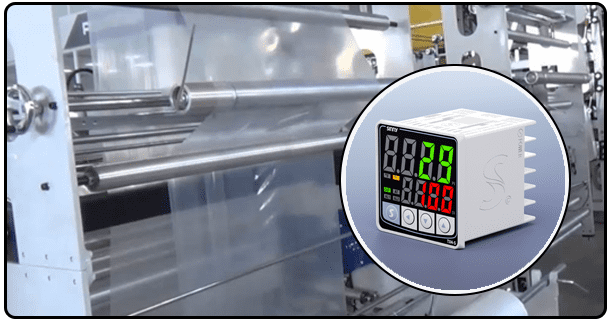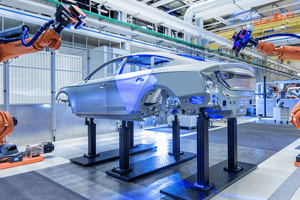The tuning of PID temperature controllers: Methods and Applications for Precision Control
Discover how to effectively tune PID temperature controls. Learn about the latest trends, methods and applications in process control that will help you optimize your system's performance.

The tuning of a PID isn't a process that fits all. The best settings are determined by the application type and dynamics of the system. The controller can exhibit unwanted behavior, such as instability or slow responses, if it is not tuned properly. Operators can adjust the integral, derivative, and proportional parameters to achieve:
Increased Accuracy : Precision temperature regulation reduces error and improves product quality.
Energy Efficient A controller that is well tuned minimizes the energy consumed by avoiding overheating or cooling cycles.
Stability of Process Proper tuning will ensure consistent performance and avoid oscillations.
The performance of a system can be significantly improved by tuning the PID controller.
1. PID controller tuning methods
Tuning PID controllers can be done in a variety of ways, from simple manual adjustments to sophisticated automated methods. These are some of the common methods:
Manual tuning
The manual tuning process involves trial and error to set the PID parameter. This method is a combination of patience and expertise, but allows the operator to adjust settings in real time.
Steps:
Increase the parameter proportionally until you see the oscillations.
Integral component adjustment to remove steady state errors.
Stabilize the system by fine-tuning the derivative parameter.
2. Ziegler-Nichols Method
Ziegler and Nichols is a systematized approach to tuning. The method involves setting integral and derivative gain to zero then increasing proportional gains until the system reaches a point of sustained oscillation. The PID parameter values are determined using pre-defined formulas based on the oscillation period and critical gain.
3. Cohen-Coon method
Ziegler-Nichols is not as precise with the Cohen-Coon tuning method. This method requires that you identify the process reaction curve of the system and calculate parameters according to it. It is best for systems that have a consistent dynamic.
4. Auto-Tuning
Auto-tuning is a feature of many modern PID controllers. This allows them to automatically change parameters in response to system performance. Auto-tuning is convenient but may not achieve optimal settings in complex processes.
A Step-byStep Guide for Tuning
The tuning of a PID can be divided into three steps.
Install the System
Verify that the sensor is correctly installed, and the actuator and controller are properly connected.
Initial parameters can be set to the default value for gains proportional, integral and derivative.
Proportional Gain
Increase the proportional gain slowly until you get the desired response from your system.
Note any oscillations and overshooting.
Fine-Tune Integral Gain
Integral component for steady state errors.
Increase the integral gain gradually while monitoring stability.
Stabilize using Derivative Gain
Use the derivative component in order to avoid overshooting or oscillations.
The system will respond smoothly and steadily if the gain is adjusted.
Refine and Test it
Tests are conducted to determine performance in different conditions.
Minor adjustments can be made to optimize the parameters.
Common challenges in tuning
Although tuning is a great benefit, there are challenges. Operators face issues like:
Overshooting : Extreme oscillations which exceed the desired temperature.
Slow response: A delay in reaching the target setpoint that impacts process efficiency.
Instability : Unstable behavior due to incorrect parameter settings.
Consider using Ziegler Nichols, Cohen Coon or other systematic methods to overcome this challenge.
Tuned PID Controllers
The benefits of a properly-tuned PID controller are numerous, and include:
HVAC System: Ensure consistent conditions of ambient temperature in buildings.
Production Regulating temperature for processes such as molding and heat treatments.
Food processing: Maintaining exact temperatures for baking and pasteurization.
Scientific Research : Provide stable conditions for lab experiments and equipment.
Energy Systems : Optimising temperature control for power generation applications and renewable energy sources.

The Future of PID Tuning
AI, IoT and other technological advancements will be key to the future of PID tuning. The following are key trends:
Algorithms Driven by AI: Machine Learning will allow for smarter tuning through adapting to system changes.
IoT Connection: Controllers with IoT capability will enable remote monitoring and adjustment.
Eco Friendly Designs: energy-efficient controllers support sustainability goals.
The PID controller's versatility and ability to control processes will be enhanced by these innovations.
The tuning of a PID controller is essential for precise temperature regulation. Operators can improve performance by understanding control algorithms and using systematic tuning techniques. PID tuning will continue to evolve as technology advances, presenting exciting opportunities for improved control and automation.
- Valores PID para Control de Temperatura: Guia Completa
- Universal Digital PID Programmable Temperature Controller | Precision





















